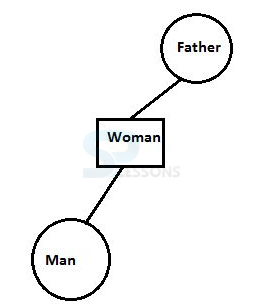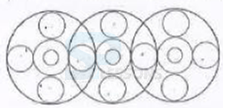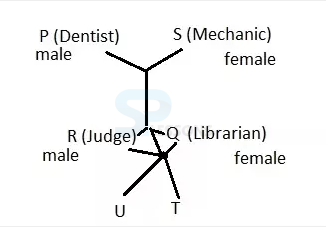 Introduction
Introduction
Employees Provident Fund Organisation (EPFO) has announced a notification for the recruitment of Assistant Posts. Candidates who are interested and meet all eligibility criteria can read the Official Notification issued by EPFO. EPFO Assistant 2019 Preliminary Exam would be held on [latex]{30}^{th}[/latex]July 2019 and [latex]{31}^{st}[/latex]July 2019.
The article EPFO Assistant Prelims Model Paper 2 provides pattern Questions, and it helps the candidates to devise effective preparation strategies, by focusing on their strengths and weaknesses in different topics and also useful to the candidates while preparing Various Insurance, Banking & Government Exams like SBI PO, SBI Clerk, SSC CPO, SSC CHSL.
Preliminary Examination is important to qualify for the Mains Examination. Below mentioned data gives an overview of the EPFO Assistant Prelims Model Paper. The paper is divided into three sections i.e., Reasoning ability, Numerical Aptitude, English Language.
 Pattern
Pattern
| EPFO Assistant Exam Pattern – Prelim | |||||
|---|---|---|---|---|---|
| S. No. | Name of the Test (Objective Tests) | No. of Questions | Maximum Marks | Duration | Version |
| 1. | English Language | 30 | 30 | 20 Minutes | English |
| 2. | Reasoning Ability | 35 | 35 | 20 Minutes | Bilingual |
| 3. | Numerical Aptitude | 35 | 35 | 20 Minutes | Bilingual |
| Total | 100 Questions | 100 Marks | 1 Hour | ||
 Quiz
Quiz
Directions (1 - 5): In each of the following sentences, there are two blank spaces. Below each sentence there are five pairs of words denoted by numbers (1), (2), (3), (4) and (5). Find out which pair of words can be filled up in the blanks in the sentences in the same sequence to make the sentence grammatically correct
Q1. The ___________ you work, the ___________ for your prosperity
- A. more, best
B. least, best
C. harder, better
D. decent, brightest
- A. Should, proof
B. If, numbers
C. Had guarantee
D. Do, number
- A. desire, brought
B. negligence, led
C. fault, lauded
D. mistake, subjected
- A. tired, brought
B. precarious, approached
C. preoccupied, sent
D. unwell, returned
- A. likes, reservation
B. judges, bias
C. blames, prudence
D. praises, point
- A. painting adoring the wall
B. painting adoring the walls
C. painting sticking the walls
D. painting adorning the walls
- A. of the selected English Medium
B. at the select English Medium
C. upon the selected English Medium
D. of the section English Medium
- A. the data had analyzed also
B. the data were also concluded
C. the data were also analyzed
D. data were analyzed also
- A. is a more highest mountain
B. is the highest mountain
C. is the higher mountain
D. is the highest mountain
- A. was observer the best
B. hand has been proved far better
C. has been observed well
D. No correction required
- A. to
B. with
C. from
D. by
- A. factors
B. features
C. reasons
D. methods
- A. process
B. system
C. procedures
D. policy
- A. fall
B. rise
C. down
D. decrease
- A. evaluation
B. assessment
C. result
D. competence
- A. flood
B. growth
C. increase
D. slope
- A. falling
B. diminishing
C. rising
D. growing
- A. lines
B. long
C. rows
D. queues
- A. managerial
B. nice
C. prestigious
D. available
- A. vacate
B. posted
C. created
D. available
- A. QPRS
B. RSPQ
C. RSQP
D. QSPR
- A. SPQR
B. QSRP
C. QRSP
D. SQRP
- A. PRQS
B. SPRQ
C. SPQR
D. PRSQ
- A. SQRP
B. SQPR
C. QSRP
D. QSPR
- A. RPQS
B. RPSQ
C. SRPQ
D. SQPR
- A. fairs and festivals
B. habits and traditions
C. usual practices and religious rites.
D. superstitions and formalities.
- A. the function of the army
B. laws and people’s rights
C. the fear of the law and citizen’s security.
D. the functions of the police
- A. Law protects those who respect it
B. Law protects those who respect it
C. A criminal is deterred from committing crimes only for fear of the law
D. The forces of law help to transform irresponsible citizens into responsible ones.
- A. To protect the privileges of all citizens
B. To check violent activities of citizens.
C. To ensure peace among citizens by safeguarding individual rights.
D. To maintain peace during extraordinary circumstances.
- A. It deals with the importance of the army in maintaining law and other
B. It highlights the role of the police as superior to that of the army.
C. It discusses the roles of the army and the police in different circumstances.
D. It points to the responsibility of the Minister and the Inspector General of Police.
Q1. Introducing a man, a woman said, “His mother is the only daughter of my father”. How is the man related to the woman
Hence, the required answer will be- LAUNNCH.
Q3. 12 : 72 : : 8 : ?
Similarly, BIN -----------> ACHJMO;
Q5. 6 : 42 : : 7 : ?
- A. Son
B. Father
C. Brother
D. Uncle
- A. LABOURS
B. LAUNNCH
C. DEBATES
D. RESULTS
| A | B | C | D | E | F | G | H | I | J | K | L | M |
| Z | Y | X | W | V | U | T | S | R | Q | P | O | N |
- A. 36
B. 32
C. 38
D. 40
- A. ACJHMO
B. CAHJMOC
C. CAJHOM
D. ACHJMO
| A | B | C | D | E | F | G | H | I | J | K | L | M |
- A. 48
B. 40
C. 56
D. 52
- A. Factory
B. Drugs
C. Office
D. Ore
- A. DMN
B. DNM
C. DNN
D. DMM
- A. Lawyer
B. Legislator
C. Mayor
D. Governor
- A. Acute
B. Parallel
C. Right
D. Obtuse
- A. 50
B. 120
C. 37
D. 145
- A. B S
B. E V
C. D X
D. I Z
- A. OKHA
B. PERU
C. ERKU
D. ANDI
- A. 200
B. 191
C. 808
D. 1331
- A. 18
B. 20
C. 16
D. 19
- A. HHSS
B. EEHS
C. ELHA
D. EHSL
- A. 1270
B. 1350
C. 1490
D. 1610
- A. 58
B. 32
C. 60
D. 40
- A. 50
B. 150
C. 250
D. 350
- A. 350
B. 150
C. 300
D. 200
- A. -1800
B. 1450
C. -1660
D. 1681
- A. Dentist
B. Judge
C. Mechanic
D. None of these
- A. Brother
B. Uncle
C. Father
D. Grandfather
- A. one
B. Three
C. Four
D. Data inadequate
- A. Dentist
B. Librarian
C. Judge
D. Mechanic
- A. PQ
B. PR
C. PS
D. Can’t be determined
- A. ro jo la
B. fa la jo
C. la ki jo
D. fa ki jo
- A. Only fa
B. Only la
C. Only so
D. Either (a) or (b)
- A. colours
B. sky
C. high
D. rocket
- (i) A, B, C, D, E, F, G, and H are sitting around a circle facing the center but not necessarily in the same order.
(ii) B sits second to the left of H’s husband. No female is an immediate neighbor of B.
(iii) D’s daughter sits second to the right of F, F is the sister of G. F is not an immediate neighbor of H’s husband.
(iv) Only one person sits between A and F. A is the father of G. H’s brother D sits to the immediate left of H’s mother. Only one person sits between H’s mother and E
- A. Immediate left
B. Third to the right
C. Third to the left
D. Second to the right
- A. Immediate Right
B. Third to the right
C. Third to the left
D. Second to the right
- A. F
B. C
C. E
D. H
- A. C is the cousin of E
B. H and H’s husband are immediate neighbors of each other
C. No female is an immediate neighbor of C
D. B is the mother of H
- A. F’s grandmother
B. G’s son
C. D’s mother-in-law
D. A
- A. Ambrish
B. Amit
C. Rohit
D. Manu
- A. Chess
B. Football
C. Cricket
D. Tennis
Q1. The ratio between the present ages P and Q is 5 : 7 respectively. If the difference between Q’s present age and P’s age after 6 years is 2, what is the total of P’s and Q’s present ages?
Q26. Find the ratio between the total number of female went for the museum from district A and C together to that of the total number of people went for the museum from district B?
- A. 48
B. 50
C. 58
D. 60
- A. 12
B. 24
C. 36
D. None of these
- A. 18 days
B. 24 days
C. 30 days
D. 36 days
- A. 50 years
B. 60 years
C. 70 years
D. 75 years
- A. 20 years
B. 19 years
C. 39 years
D. 29 years
- A. 30 years
B. 35 years
C. 40 years
D. 45 years
- A. 12,421
B. 9,423
C. 11,600
D. 10,500
- A. 2 hours
B. 3 hours
C. 4 hours
D. 5 hours
- A. 8.5 km/hr
B. 9 km/hr
C. 10 km/hr
D. 12.5 km/hr
- A. 2 : 1
B. 3 : 2
C. 8 : 3
D. Cannot be determined
- A. 20:9
B. 9:20
C. 29:11
D. 11:29
- A. 3 km/hr
B. 5 km/hr
C. 8 km/hr
D. 9 km/hr
- A. 4 km/hr
B. 6 km/hr
C. 8 km/hr
D. Data inadequate
- A. 1.2 km
B. 1.8 km
C. 2.4 km
D. 3.6 km
- A. 2 mph
B. 2.5 mph
C. 3 mph
D. 4 mph
- A. 2.4 km
B. 2.5 km
C. 3 km
D. 3 km
- A. 39, 30
B. 41, 32
C. 42, 33
D. 43, 34
- A. 588 apples
B. 600 apples
C. 672 apples
D. 700 apples
- A. [latex]\frac {1}{3}[/latex]
B. [latex]\frac {1}{8}[/latex]
C. [latex]\frac {2}{8}[/latex]
D. [latex]\frac {1}{16}[/latex]
- A. 7
B. 10
C. 12
D. 13
- A. 72
B. 84
C. 96
D. 58
- A. 24
B. 16
C. 12
D. 20
- A. 18
B. 12
C. 24
D. 36
- A. 1340
B. 1060
C. 1120
D. 1280
- A. 126
B. 142
C. 168
D. 150
| Districts | Total No. Of Peoples | % of Female |
|---|---|---|
| A | 1200 | 42 % |
| B | 1350 | 54 % |
| C | 1500 | 48 % |
| D | 950 | 52 % |
| E | 1100 | 46 % |
| F | 800 | 56 % |
- A. 17 : 23
B. 123 : 142
C. 257 : 316
D. 68 : 75
- A. 25
B. 40
C. 70
D. 55
- A. 680
B. 705
C. 665
D. 720
- A. 105 %
B. 130 %
C. 145 %
D. 90 %
- A. 23 % less
B. 35 % less
C. 52 % more
D. 23 % more
- A. Rs. 200
B. Rs. 250
C. Rs. 300
D. None of these
- A. Rs. 6876.10
B. Rs. 6999.2
C. Rs. 6654
D. Rs. 7000
- A. 4.37%
B. 5%
C. 6%
D. 8.75%
- A. Rs. 21,000
B. Rs. 22,500
C. Rs. 25,300
D. Rs. 25,800
- A. No profit, no loss
B. 5%
C. 8%
D. 10%
Other Articles
 Study Guide
Study Guide
| Competitive Exams - Study Guide | ||
|---|---|---|
| Category | ||
| Quantitative Aptitude | Reasoning Ability | General Awareness |
| Computer Awareness | English Knowledge | Banking Awareness |
| General Science | World of Words | Descriptive Test |
 Exams
Exams
| Competitive Exams - College Entrance Exams | |||
|---|---|---|---|
| Category | Notification | ||
| Diploma | NITC New Delhi | ||
| Click Here For – All India Entrance Exam Notifications | |||
 Daily CA
Daily CA
 Job-Alerts
Job-Alerts
 SP Quiz
SP Quiz
| Competitive Exams - Practice Sets | |
|---|---|
| Category | Quiz |
| Quant Aptitude | Permutation and Combination |
| Speed and Time | |
| Reasoning Ability | Puzzles |
| Insurance Awareness | Insurance Awareness |
 GK
GK
| General Knowledge for Competitive Examinations | |
|---|---|
| Topic | Name of the Article |
| GK - World | World Longest Train Services |
| Countries Capital Currency | |
| GK - India | Indian Cities Nicknames |
| Research Centres in India | |
| GK - Abbreviations | Sports Abbreviations |
| Science Information Technology Abbreviations | |
| GK - Banking & Insurance | IBPS PO Interview Questions |
| Money and Money Market | |
| GK - Science & Technology | Physical Quantities and Units |
| Chemistry Terminology | |








